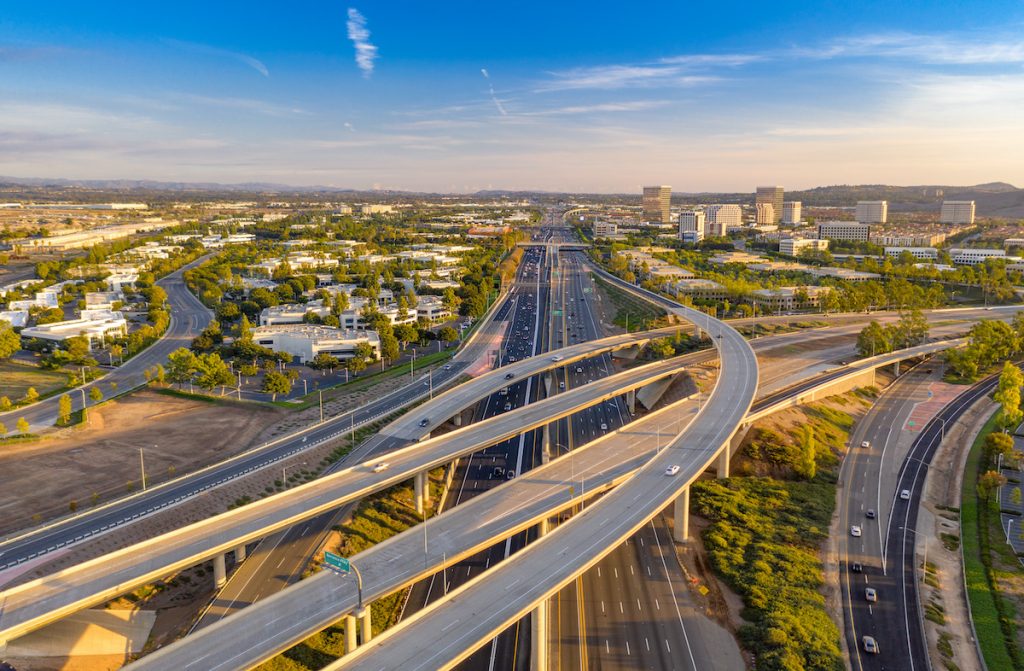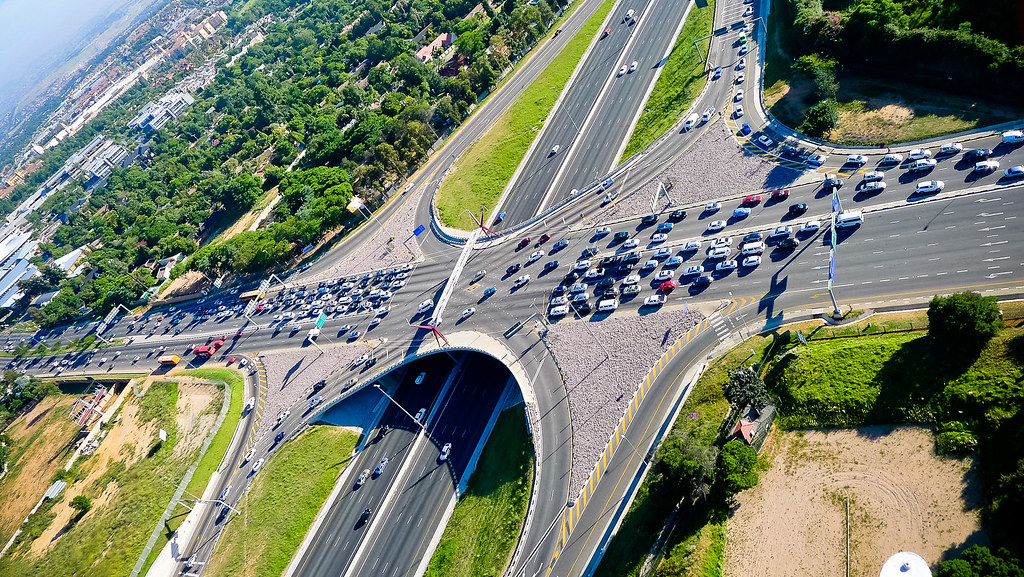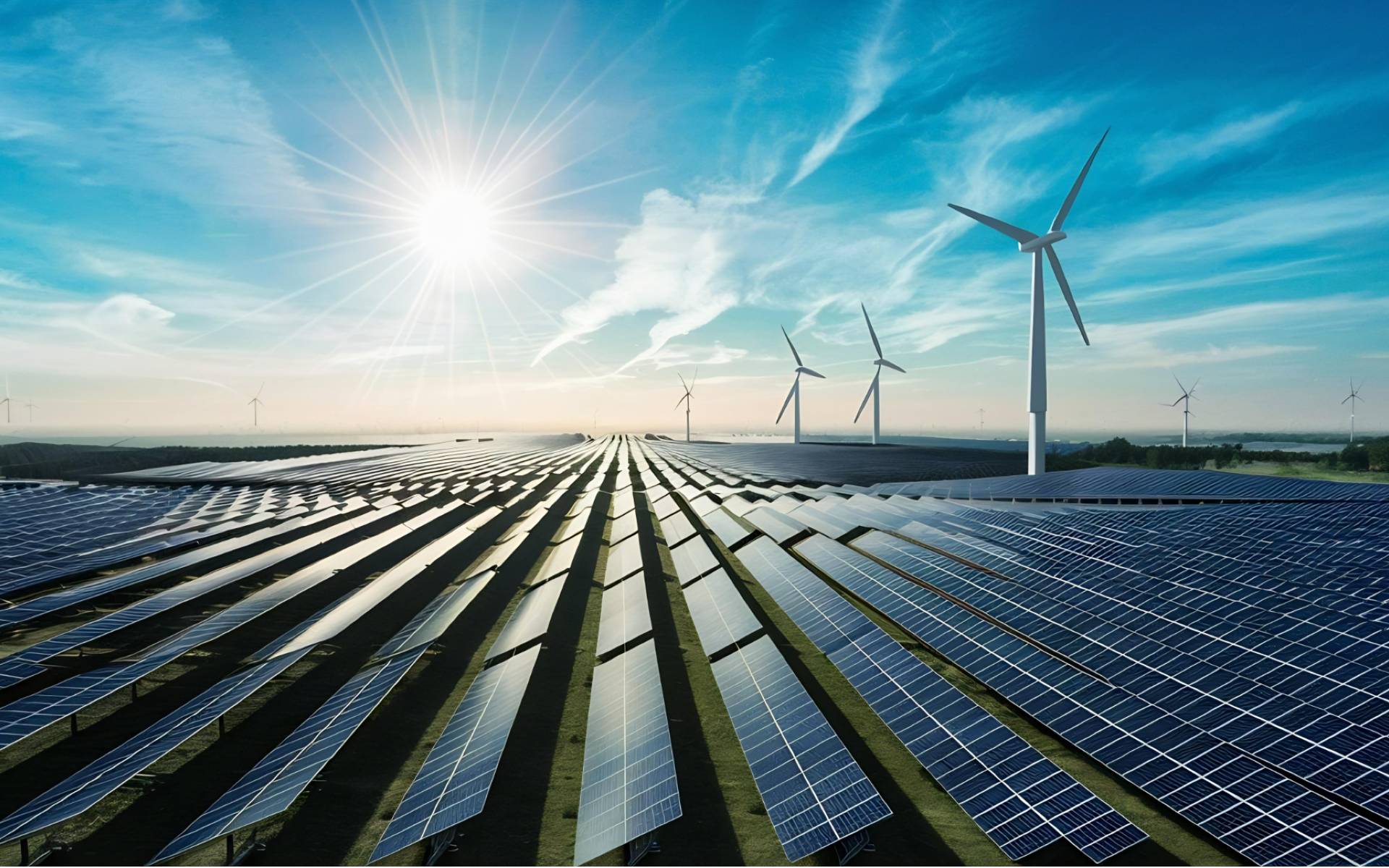The infrastructure of Africa is at a turning point. The need for better infrastructure is growing rapidly as the continent expands.
But many challenges stand in the way. Poor roads, limited energy, and a lack of basic services slow progress. How can Africa overcome these challenges and develop the necessary infrastructure?
In this blog, we will explore Africa’s current infrastructure, its biggest challenges, and the opportunities ahead. You will also learn how leaders like Gilbert Chagoury are making a difference through smart investments and projects.
Current State of The Infrastructure of Africa
Africa’s infrastructure development heavily relies on improving transportation networks that connect people, goods, and markets efficiently.

Transportation Networks: The Backbone of Economic Growth
The transport infrastructure of Africa forms the foundation for trade, economic development, and social mobility across the continent. The road network spans approximately 2 million kilometers, yet only 25% of these roads are paved. This presents both a significant challenge and an opportunity for modernization.
- Highway systems connect major urban centers, but rural communities often remain isolated due to inadequate road access. Countries like South Africa and Morocco have developed relatively sophisticated highway networks, while nations in Central and West Africa continue to face connectivity gaps that limit economic growth.
- Railway development varies dramatically across regions. While North African countries maintain extensive rail networks connecting to European systems, sub-Saharan Africa has seen limited railway expansion since independence. However, new projects are emerging, including the Standard Gauge Railway connecting Kenya’s major ports to inland regions.
- Port facilities serve as critical gateways for international trade, with major installations in Lagos, Durban, and Alexandria handling millions of tons of cargo annually. Airport infrastructure has expanded significantly, with new terminals and improved facilities supporting both regional connectivity and international tourism.
Energy Infrastructure of Africa: Powering Development
Electricity generation and distribution remain critical infrastructure challenges across Africa. While the continent possesses abundant renewable energy resources, including solar, wind, and hydroelectric potential, many regions still experience frequent power outages and limited grid access.
- Power generation capacity has grown steadily, yet demand continues to outpace supply in most countries. Traditional fossil fuel plants provide base load power, while renewable energy projects are gaining momentum as costs decrease and technology improves.
- Solar energy initiatives have flourished in North and East Africa, where abundant sunshine makes large-scale solar installations economically viable. Wind power development focuses primarily on coastal regions and highland areas with consistent wind patterns.
- Oil and gas pipeline networks distribute energy resources across borders, creating regional energy markets and supporting industrial development. These systems require ongoing investment in maintenance and expansion to meet growing demand.
Water and Sanitation: Essential Services for Health and Development
- Water supply systems across Africa face mounting pressure from population growth, urbanization, and climate change. While urban areas generally have better access to treated water, rural communities often rely on traditional sources that may not meet safety standards.
- Sanitation facilities remain inadequate in many regions, particularly in rapidly growing urban areas where infrastructure development lags behind population growth. This creates public health challenges and environmental concerns that require immediate attention.
- Irrigation systems support agricultural productivity, yet much of Africa’s farming still depends on rainfall. Expanding irrigation infrastructure could significantly boost food security and rural economic development.
Telecommunications: Connecting Communities
- Mobile network coverage has expanded rapidly across Africa, with many regions achieving near-universal access to basic telephone services. Smartphone adoption continues to grow, enabling access to digital services and economic opportunities.
- Internet connectivity varies widely between urban and rural areas. Fiber optic cables connect major cities to global networks, while satellite technology provides coverage to remote regions. However, internet speeds and reliability often lag behind global standards.
- Digital infrastructure development includes data centers, cloud computing facilities, and e-government systems that support modern business operations and public services. Investment in these areas is accelerating as countries recognize the importance of digital transformation.
Key Challenges Facing Infrastructure Development
The biggest hurdles to Africa’s infrastructure growth are the limited availability of sustainable funding and investment opportunities.
Funding and Investment Constraints
The infrastructure of Africa requires massive financial resources that exceed most countries’ public budgets. The African Development Bank estimates annual infrastructure needs at $130-170 billion, with a financing gap of $68-108 billion. This shortfall slows development and limits economic growth potential.
- High construction costs result from limited local manufacturing capacity for infrastructure materials, requiring expensive imports that strain foreign currency reserves. Complex project financing structures often involve multiple stakeholders and lengthy approval processes.
- Foreign investment attraction remains challenging due to perceived risks, regulatory uncertainties, and limited local capital markets. However, successful projects demonstrate that well-structured partnerships can deliver strong returns while advancing development goals.
Regulatory and Governance Issues
- Corruption and governance challenges create obstacles for infrastructure development across many African countries. Transparent procurement processes, clear regulatory frameworks, and effective project oversight are essential for successful infrastructure delivery.
- Bureaucratic hurdles often delay project approval and implementation. Streamlined processes and improved inter-agency coordination can significantly reduce project timelines and costs.
- Political stability affects long-term infrastructure planning and investment decisions. Countries with stable governments and clear policy frameworks tend to attract more private investment and achieve better project outcomes.
Technical and Capacity Limitations
Skilled labor shortages affect all aspects of infrastructure development, from initial design to ongoing maintenance. Training programs and educational partnerships can help build local capacity while reducing dependence on expatriate expertise.
Project management capabilities vary widely across the continent. Strengthening local project management skills and establishing clear performance standards can improve delivery outcomes and reduce costs.
Technological gaps limit the adoption of modern construction methods and smart infrastructure systems. Technology transfer programs and international partnerships can help bridge these gaps and accelerate modernization.
Environmental and Social Considerations
Environmental impact assessments are increasingly important as climate change affects infrastructure planning and design. Projects must consider long-term sustainability and resilience to extreme weather events.
Social displacement often accompanies large infrastructure projects, requiring careful planning and community engagement to minimize negative impacts on affected populations.
Community involvement in infrastructure planning ensures that projects meet local needs and gain public support. Participatory planning processes can identify priorities and build consensus for development initiatives.
Emerging Opportunities in The Infrastructure of Africa

Africa’s rapidly growing economy and youthful population are creating new opportunities for innovation and investment in infrastructure development.
Public-Private Partnerships: Leveraging Private Sector Expertise
Public-private partnerships offer significant benefits for infrastructure development by combining public oversight with private sector efficiency and innovation. These arrangements can accelerate project delivery while sharing risks and responsibilities between partners.
Successful PPP projects across Africa demonstrate the model’s potential. The Gauteng Freeway Improvement Project in South Africa and various port development initiatives have delivered improved infrastructure while maintaining fiscal sustainability.
Risk mitigation strategies for PPPs include clear contractual frameworks, appropriate risk allocation, and strong regulatory oversight. Development finance institutions can provide guarantees and technical assistance to support successful partnerships.
Regional Integration: Building Cross-Border Connections
Cross-border infrastructure projects create regional markets and economic integration opportunities. Power pooling arrangements allow countries to share electricity resources and improve grid reliability.
Harmonized regulations and standards facilitate regional integration by reducing trade barriers and simplifying cross-border transactions. The African Continental Free Trade Agreement provides a framework for infrastructure coordination.
Regional economic integration benefits include increased trade volumes, improved resource allocation, and enhanced competitiveness in global markets. Infrastructure connectivity is essential for realizing these benefits.
Technological Innovation: Smart Infrastructure Solutions
Smart technology integration in infrastructure systems can improve efficiency, reduce maintenance costs, and enhance service delivery. Internet of Things sensors, data analytics, and artificial intelligence support predictive maintenance and optimal resource allocation.
Sustainable building practices incorporate energy-efficient design, renewable energy systems, and environmentally friendly materials. These approaches reduce operating costs and environmental impact while meeting international standards.
Digital infrastructure solutions include electronic payment systems, digital identity platforms, and online government services that improve citizen access to public services and support economic development.
Renewable Energy Investment: Sustainable Power Solutions

- Solar power projects benefit from Africa’s abundant sunshine and declining technology costs. Large-scale installations can provide clean electricity at competitive prices while reducing dependence on fossil fuel imports.
- Wind energy development focuses on areas with consistent wind resources, including coastal regions and elevated terrain. These projects can complement solar installations and provide diversified renewable energy portfolios.
- Hydroelectric power remains important for many African countries, though environmental and social considerations require careful project planning and community engagement.
- Investment opportunities in renewable energy attract international capital and support local economic development through job creation and technology transfer.
The Chagoury Group’s Infrastructure Contributions
Gilbert Chagoury’s vision for African development encompasses a sustainable infrastructure of Africa that serves local communities while supporting economic growth. Through the Chagoury Group’s diverse business activities, he has demonstrated how private sector investment can address critical infrastructure needs.
Construction and Development Projects
The Chagoury Group’s construction division has delivered significant infrastructure projects across West Africa. Their expertise spans industrial facilities, residential developments, and commercial complexes that support economic growth and improve living standards.
Eko Atlantic represents one of Africa’s most ambitious infrastructure projects. This land reclamation initiative creates new urban space while addressing coastal erosion challenges facing Lagos. The project demonstrates how innovative engineering can solve environmental problems while creating economic opportunities.

Quality construction standards ensure that Chagoury Group projects meet international specifications while utilizing local materials and labor. This approach builds local capacity while delivering durable infrastructure that serves communities for decades.
Industrial Development: Building Manufacturing Capacity
The Chagoury Group’s industrial division includes flour mills, glass manufacturing, and other production facilities that support local economies. These investments create jobs, transfer technology, and reduce dependence on imports.
Flour mill operations in Nigeria demonstrate how industrial infrastructure can support food security while creating economic opportunities. The Ideal Flour Mills in Kaduna was the first of four facilities that helped establish local food processing capacity.
Manufacturing investments require supporting infrastructure of Africa, including reliable power supplies, transportation networks, and skilled workforce development. The Chagoury Group’s integrated approach addresses these needs through complementary business activities.
Healthcare Infrastructure: Improving Community Health
The Ideal Eagle Hospital provides healthcare services for Chagoury Group employees and the surrounding communities. This investment demonstrates the company’s commitment to workforce development and community welfare.
Healthcare infrastructure development requires specialized equipment, trained personnel, and ongoing operational support. The Chagoury Group’s approach ensures sustainable operations while maintaining high-quality care standards.
Community health improvements result from better access to medical services, preventive care programs, and health education initiatives. These investments support workforce productivity and overall economic development.
Sustainable Development Practices
Environmental responsibility guides Chagoury Group’s infrastructure projects of Africa, incorporating sustainable design principles and environmental protection measures. These practices ensure long-term viability while minimizing ecological impact.
Social impact considerations include community engagement, local hiring preferences, and support for education and training programs. The Chagoury Group recognizes that successful infrastructure development requires community support and participation.
Gilbert Chagoury’s philanthropic activities complement business investments by supporting education, healthcare, and cultural preservation initiatives. This holistic approach addresses both immediate infrastructure needs and long-term development goals.
Successful Infrastructure Case Studies
Across Africa, several landmark infrastructure projects showcase how innovation and strategic investment are transforming the continent’s economic and urban landscape.
Eko Atlantic: Creating Land from the Sea
Eko Atlantic demonstrates how innovative engineering can address multiple challenges simultaneously. This 10 million square meter development protects Lagos from coastal erosion while creating new urban space for Africa’s largest city.

The project uses advanced land reclamation techniques to build sustainable foundations that can support high-rise construction and modern infrastructure systems. Environmental considerations include coastal protection, drainage systems, and sustainable urban planning principles.
Economic impact extends beyond the immediate development site. Eko Atlantic attracts international investment, creates employment opportunities, and establishes Lagos as a modern financial center for West Africa.
Renewable Energy Success Stories
East African renewable energy projects demonstrate the continent’s potential for clean power generation. Solar installations in Morocco and Kenya show how large-scale renewable projects can meet growing electricity demand while reducing carbon emissions.
The Noor Solar Complex in Morocco represents one of the world’s largest concentrated solar power installations. This project provides clean electricity while creating jobs and supporting local economic development.
Kenya’s geothermal development program utilizes the Rift Valley’s volcanic activity to generate reliable renewable electricity. These projects support industrial development while reducing dependence on imported fossil fuels.
Transportation Corridor Development
Regional transportation corridors improve trade efficiency and economic integration. The Northern Corridor connecting Kenyan ports to inland markets in Uganda, Rwanda, and South Sudan demonstrates how infrastructure investment can transform regional economies.
Port modernization projects in Durban, Lagos, and other major facilities show how improved cargo handling capacity can support economic growth. Container throughput increases and reduced shipping costs benefit importers and exporters across the region.
Railway development projects, including the Standard Gauge Railway in East Africa and proposed connections in West Africa, promise to transform freight transportation and reduce logistics costs for businesses.
Future Prospects and Strategic Recommendations
Knowing about prospects and strategic recommendations is important for constructors in Africa:

Emerging Trends in African Infrastructure Development
Climate resilience increasingly influences infrastructure design and planning decisions. Projects must withstand extreme weather events while supporting adaptation to changing environmental conditions.
Smart city development incorporates digital technologies, sustainable design, and integrated service delivery. These approaches can improve urban livability while managing rapid population growth.
Green building standards and sustainable construction practices are becoming mainstream requirements for major projects. These approaches reduce environmental impact while often providing cost savings over project lifecycles.
Policy Recommendations for Governments
Regulatory framework improvements can attract private investment and accelerate project delivery. Clear rules, transparent processes, and consistent application support business confidence and long-term planning.
Capacity building programs should focus on technical skills, project management, and regulatory oversight. Local expertise development reduces project costs while building sustainable institutional capacity.
Financing mechanism innovation includes development bonds, guarantee programs, and blended finance structures that combine public and private resources. These tools can mobilize additional investment while managing risks.
Private Sector Engagement Strategies
Investment incentive programs can attract private capital to priority infrastructure sectors. Tax benefits, regulatory streamlining, and risk mitigation support business case development.
Partnership frameworks should clearly define roles, responsibilities, and risk allocation between public and private partners. Successful partnerships require mutual understanding and shared commitment to project success.
Local content requirements can ensure that infrastructure investments support community development and workforce training. Balanced approaches maximize local benefits while main performance monitoring systems track project outcomes and provide feedback for continuous improvement. Regular assessment helps identify best practices and address implementation challenges. Maintaining project viability.
Sustainable Development Integration
Environmental impact assessments should guide infrastructure planning from project inception through operational phases. Comprehensive environmental management supports long-term sustainability and community acceptance.
Social inclusion measures ensure that infrastructure benefits reach all community members, including marginalized populations. Inclusive design and accessible services support equitable development outcomes.
Economic diversification benefits result when infrastructure investments support multiple economic sectors and create diverse employment opportunities. Integrated development approaches maximize economic impact.
Guilbert Chagoury: Building Africa’s Better Infrastructure
The future of Africa is being built today. As we’ve seen, overcoming the continent’s infrastructure gap is a complex but achievable mission, powered by strategic partnerships, sustainable investment, and technological innovation. From transformative projects like Eko Atlantic to the continent-wide push for renewable energy, the blueprint for progress is clear. The key takeaway is that building a connected and prosperous Africa requires the collective action of visionary governments, committed private investors, and engaged communities.
Ready to be a part of this transformation? Let’s Make It Happen. The opportunities within the infrastructure of Africa are vast, and the time to get involved is now.
